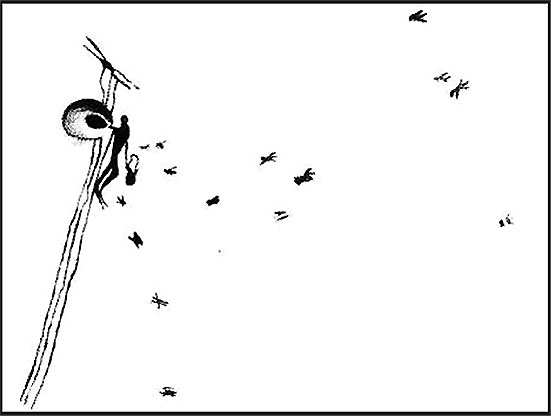
A Brief History of Beekeeping
Ancient Beekeepers:
o Beekeeping dates back at least 17,000 years.
o Primitive man gathered honey from bee colonies in hollow trees and rock crevices. This practice is still carried out in many places. o Approximately 6,000 B.C. an unknown artist created a rock painting in La Arana shelter, eastern Spain. It depicts two men climbing a tree to gather honey. The man at the top of the tree is in the process of robbing the hive, with bees flying around him. The painting was discovered in 1924.
o In 3,000 B.C. pictures of honeybees were inscribed in Egyptian tombs. Honey was left in some of these tombs. When the ancient honey was discovered it was still good!
o The Bible refers to a land of “Milk and Honey”.o Ancient Mediterranean people housed bees in long, cylindrical, clay pots turned in a horizontal position.
o Ancient Europeans tended wild bee nests found in hollowed trees. During the Stone Age hives were developed by cutting the nest section out of fallen trees with axes. The log section could be moved and more easily maintained.
o Skeps or Baskets made of coiled straw or woven twigs can be traced back to 5,000 B.C. They are still used today and have not changed much.
Early Advances in Beekeeping:
o Honeybees were transported from the Old World to the New World in the early 1600’s.
o Between 1500 and 1851 Skep Beekeepers devised various methods for taking honey from hives without killing the bees. They also learned to combine colonies for wintering.
o In 1682 Sir George Wheler published a report on woven wicker hives he had seen in Greece. The hive used top bars and was wider at the top, so the combs did not become attached to the sides of the hive.
Modern Advances in Beekeeping:
o In 1851, Lorenzo Langstroth developed the moveble-frame hive. The hive used 3/8 inch spacing between the frames and the hive body. This critical spacing prevented the bees from attaching the frames to the hive body.
o In 1865, Franz von Hruscha created a centrifugal honey extractor.
o The Langstroth Hive and Centrifugal Extractor remain the most common tools for modern honey production.